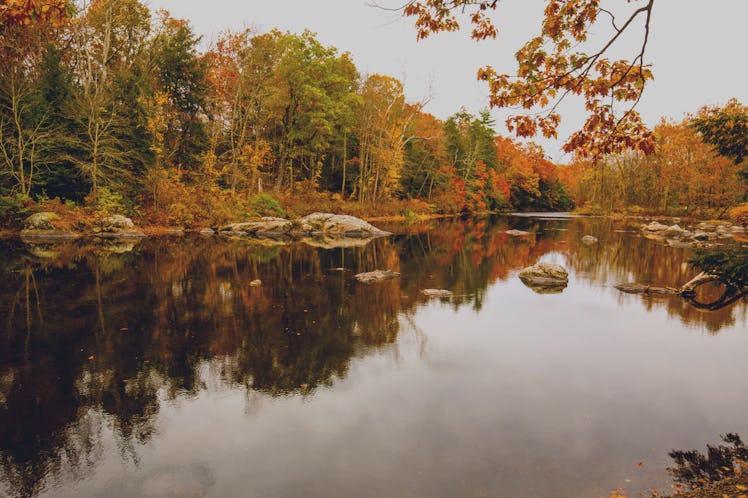4 Ways The Groundbreaking Clean Water Act Made The World Better For Our Kids
The Clean Water Act, legislation that protects U.S. waters from pollution and contamination, might be gutted by the Supreme Court this week. It would undo decades of protections for kids and families.

This week, the U.S. Supreme Court sits poised to step further into deregulation by dismembering a decades-old law that protects families and children. On Monday, the Court heard the case Sackett v. Environmental Protection Agency — a lawsuit brought by the Sacketts, a married couple, suing the Environmental Protection Agency (EPA) for the right to fill in a natural wetland on their residential property.
On the surface, the case seems straightforward. Wetlands and watersheds are protected under 1962’s Clean Water Act (CWA) — a bill passed to protect U.S. waters from pollution and contamination. The Sacketts claim their wetland shouldn’t be considered protected by the CWA under federal law because it isn’t a navigable waterway, and isn’t in contact with a larger body of water. The waters of the case become muddy, though, when the definition of “waters of the United States” — or WOTUS — is considered.
What Is The Clean Water Act?
The CWA definition of waterways of the United States is broad. The law gives the EPA the ability to “restore and maintain the chemical, physical, and biological integrity of the Nation’s waters,” including dry river basins, arroyos, ephemeral or seasonal creeks, and, you guessed it, the soggy wetlands on the Sacketts’ property.
As the newly conservative-dominated SCOTUS seeks to redefine WOTUS, potentially excluding, among other things, the arroyos and ephemeral creeks much of the arid West depends on, it could spell trouble for our drinking water supply. If the decision, which is due early in 2023, is in favor of the Sacketts, it could roll back major protections that keep us safe and healthy — not just from developers looking to destroy wetlands for construction, but also from corporations and agricultural enterprises looking to dump waste and pollutants into waterways that feed directly into reservoirs.
This year is the 50th anniversary of the landmark legislation that ensures safe, clean drinking water for Americans. So, in honor of its potential demise, here are four ways the Clean Water Act has benefitted children and families.
1. The Clean Water Act Helps Provide Clean Drinking Water
The Clean Water Act protects drinking water for millions of Americans who depend on streams and private wells as their primary water source. The laws established by the CWA keep ground and surface water clean of pollutants and contaminants that could be harmful to those who aren’t a part of a municipal water supply. Run-off from agricultural enterprises, chemical and waste dumping from corporations, and construction debris can pollute groundwater and streams, making the water that rural Americans depend on undrinkable.
Though the CWA isn’t the regulatory body in charge of municipal drinking water supplies, it helps protect the waters that ultimately fill municipal reservoirs.
In 2020, the Trump Administration briefly lifted portions of the CWA, allowing for deregulation and less oversight. The result? Water runoff from the Los Alamos National Laboratory that was contaminated with mercury and PCBs ultimately contaminated the drinking water of nearby Santa Fe, New Mexico.
2. The Clean Water Act Helps Provide Clean Water for Wildlife
Before the launch of the CWA in 1962, there were no regulations on what could and could not be dumped into waterways. Lakes and rivers became so polluted they infamously caught fire; fish from polluted waterways were not edible; aquatic life died; and wildlife suffered as potable drinking sources were in short supply. At one point, the Potomac River, which runs through the nation’s capital, was so polluted that people were advised to seek prompt medical attention if they came into contact with its water.
Now, thanks to the CWA, there are robust regulations about what can and cannot be discharged into waterways, kids can eat the fish they catch, rivers don’t catch on fire, and we don’t need to worry about getting sick from an accidental dip into the Potomac or East Rivers.
3. The Clean Water Act Helps Protect Biodiversity — And Our Planet
Thanks to the protections afforded to wetlands and watersheds, wildlife biodiversity is making a comeback. Fish populations that plummeted during the early and mid 20th century began to rise, which meant populations of animals that depended on fish as a vital food source, like river otters, bears, and aquatic birds, also began to rise. That wildlife biodiversity matters greatly for the health of our planet — and for the health of our children and their children.
4. The Clean Water Act Helps Kids Play Safely
Fishing with your kids, hunting, boating, swimming, camping, and even spending a family day at the beach are all safer now because of the Clean Water Act. The CWA provides safe water for families to enjoy recreationally and allows kids to grow up in a world where they don’t need to worry about developing an illness from wading into a local creek or feasting on the catch of the day.
The Clean Water Act has undoubtedly improved the lives of American families. But if deregulation is in the cards, many of the protections we take for granted will likely disappear, allowing our waterways to become the dangers they once were instead of the source of water, food, and recreation we enjoy today.
This article was originally published on